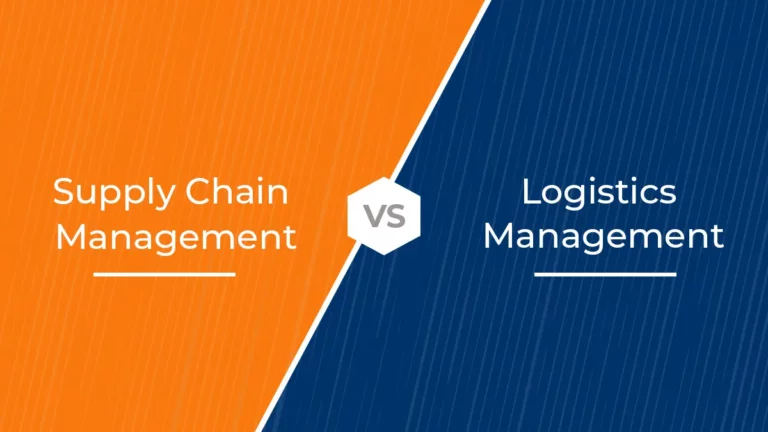What is Supply Chain Strategy? A Complete Overview
Every business dealing with large-scale shipments faces the same question: How can we ensure efficiency while minimizing costs and risks? Supply chain strategy is the answer. It’s not just about moving goods; it’s about creating a system that works seamlessly from sourcing to delivery. Without a clear strategy, delays, waste, and missed opportunities pile up.
In this guide, we’ll break down what supply chain strategy is, why it matters, and how it can transform operations. Whether you’re in retail, manufacturing, or e-commerce, this guide offers practical insights to optimize your supply chain.
What Is Supply Chain Strategy?
Supply Chain Strategy defines how a business plans, manages, and improves its supply chain operations. It aligns supply chain goals with the company’s overall objectives. From sourcing raw materials to delivering the final product, every step involves strategic decisions.
At its core, a supply chain strategy answers key questions. Where should you source materials? How can you optimize inventory levels? What’s the best way to ensure timely delivery? For enterprises handling large shipments, having a clear strategy isn’t optional; it’s essential.
A good strategy considers demand fluctuations, supplier relationships, and logistics costs. Businesses need flexibility to adapt to market changes and reliability to meet customer expectations.
Why Is Supply Chain Strategy Important?
An effective supply chain strategy directly impacts profitability, efficiency, and customer satisfaction. Enterprises with poor strategies often face missed deadlines, high costs, and wasted resources.
When every part of the supply chain works together, costs go down, and efficiency improves. A strong strategy ensures that goods move smoothly, from production to delivery, minimizing disruptions.
Moreover, a well-executed strategy helps mitigate risks. Unexpected events like supplier issues or shipping delays; can wreak havoc. Businesses that prepare with contingency plans bounce back faster.
Finally, aligning supply chain operations with broader business goals ensures consistency. This alignment supports growth, improves scalability, and strengthens brand reputation.
Also Read: What Is Supply Chain? How It Works and How to Optimize It
Key Characteristics of an Effective Supply Chain Strategy
The most successful strategies share common traits. Below are the key characteristics that set effective strategies apart:
- Responsiveness: The ability to adjust quickly to demand changes ensures steady operations. For example, during seasonal spikes, businesses can avoid stockouts or overstocking.
- Agility: Enterprises must adapt to external changes, like new regulations or geopolitical shifts. Agile strategies ensure minimal disruptions.
- Risk Management: Identifying and preparing for potential disruptions, like supplier failures or transportation bottlenecks, ensures continuity.
- Sustainability: Customers increasingly prefer companies that reduce their carbon footprint. Sustainable sourcing and packaging practices meet these expectations.
- Technology Integration: Supply chain management tools like automation, IoT, and AI enhance visibility and accuracy across the supply chain.
Types of Supply Chain Strategies
Different businesses require tailored approaches to meet unique needs. Below are the common types of supply chain strategies:
Lean Supply Chain Strategy
This strategy focuses on eliminating waste while maximizing efficiency. It’s best suited for businesses with predictable demand. Lean practices prioritize streamlined processes and just-in-time inventory management to minimize excess costs.
Agile Supply Chain Strategy
An agile strategy emphasizes flexibility. It’s ideal for businesses operating in markets with frequent demand fluctuations. Agility allows businesses to respond quickly to changes, ensuring that inventory levels, supplier relationships, and transportation routes remain optimized under varying conditions.
Resilient Supply Chain Strategy
A resilient strategy prioritizes risk preparedness. It involves building buffers, such as multiple suppliers, diversified transportation methods, and contingency plans to ensure operations can withstand disruptions, whether they stem from natural disasters or geopolitical issues.
Hybrid Supply Chain Strategy
This strategy combines elements of lean and agile approaches. It balances efficiency with adaptability, enabling businesses to remain cost-effective while responding to unexpected challenges. Hybrid strategies are especially useful for businesses with a mix of stable and volatile product lines.
Real-Life Supply Chain Strategy Example
Challenge
A global company faced severe disruptions in its supply chain due to geopolitical tensions in the Red Sea region. These challenges led to rerouted shipments, escalating freight costs, and unpredictable delivery schedules. Additionally, the absence of accurate estimated times of arrival (ETAs) created communication gaps with customers and internal teams, further impacting trust and operations.
Solution
The company implemented GoComet’s real-time tracking tools and advanced ETA prediction systems. These tools provided end-to-end supply chain visibility of shipments and delivered timely updates to stakeholders. The real-time tracking feature allowed the business to proactively manage delays and optimize routes to minimize costs and disruptions.
Impact
This strategic approach saved the company approximately $2.5 million weekly by reducing unnecessary costs and improving operational efficiency. Customer trust was restored through transparent communication and accurate delivery timelines. The solution ensured business stability despite external challenges, highlighting the importance of integrating advanced technologies into supply chain strategies.
Steps to Develop and Optimize Your Supply Chain Strategy
Developing a strong supply chain strategy requires a step-by-step approach. Below are actionable steps:
- Define Objectives: Align supply chain goals with broader business targets. Decide whether to prioritize cost, speed, or quality.
- Analyze Current Operations: Identify bottlenecks and inefficiencies. Use tools like supply chain mapping to visualize each step.
- Leverage Technology: Implement tools like AI for demand forecasting and IoT for tracking shipments.
- Partner Strategically: Collaborate with reliable suppliers and logistics providers. Strong relationships reduce supply chain risks.
- Focus on Sustainability: Incorporate eco-friendly practices, like reducing packaging waste or using renewable energy.
- Monitor Performance: Track KPIs like delivery times, inventory turnover, and cost per shipment. Regular evaluations ensure continuous improvement.
Challenges in Strategic Supply Chain Management
Managing a supply chain comes with challenges. Below are common hurdles and how businesses can address them:
- Demand Variability: Fluctuating demand leads to stockouts or excess inventory. Solutions include accurate forecasting and flexible inventory systems.
- Supplier Dependence: Relying on a single supplier increases risks. Diversify your supplier base to ensure continuity.
- Rising Costs: Fuel price hikes and labor shortages impact logistics costs. Automating processes and optimizing routes reduce expenses.
- Global Disruptions: Events like natural disasters or political conflicts can halt operations. Supply risk management strategies minimize these impacts.
Also Read: What is Supply Chain Planning and How it works?
Advantages of Supply Chain Strategy
Adopting a supply chain strategy offers businesses multiple advantages that drive growth and operational excellence:
- Cost Efficiency: Strategically planned supply chains reduce waste, minimize transportation costs, and optimize resource utilization. This directly improves profitability.
- Improved Customer Satisfaction: Faster delivery times, consistent product availability, and better communication enhance customer experience.
- Enhanced Visibility: Advanced supply chain visibility tools provide real-time data on inventory, shipments, and supplier performance. This improves decision-making and accountability.
- Risk Mitigation: A well-structured strategy includes contingency plans for disruptions. This reduces downtime and ensures business continuity.
- Scalability: Businesses can adapt supply chain processes to accommodate growth, new markets, or increased demand without losing efficiency.
- Competitive Advantage: Companies with efficient supply chains outperform competitors in speed, cost, and reliability. This strengthens market positioning.
Future Trends in Supply Chain Strategy
As technology evolves, so do supply chain strategies. Below are trends shaping the future:
- Hyperautomation: Automation tools streamline repetitive tasks, improving speed and accuracy.
- AI Integration: Advanced analytics predict demand and optimize resource allocation.
- Sustainability: Green logistics practices; like electric vehicles and carbon tracking are becoming standard.
- Blockchain: Ensures transparency by tracking goods from origin to delivery.
- Collaborative Networks: Shared data platforms improve communication between stakeholders.
Also Read: What is Green Supply Chain Management and How it Works?
Conclusion
A strong supply chain strategy is essential for businesses aiming to stay competitive. By focusing on responsiveness, risk management, and technology, enterprises can optimize their operations. Regular evaluation and adaptability ensure long-term success.
FAQs
What’s the difference between supply chain management and strategy?
Supply chain management focuses on daily operations. Strategy focuses on long-term goals and alignment with business objectives.
How often should businesses review their supply chain strategy?
Regular reviews at least annually help address new challenges and market changes.
Can small businesses benefit from supply chain strategies?
Yes. Tailored strategies help even small enterprises reduce costs and improve efficiency.
What role does technology play in supply chain strategies?
Technology improves visibility, accuracy, and efficiency, making it indispensable in modern supply chains.
Why is sustainability important in supply chain strategy?
Sustainability reduces environmental impact and meets growing consumer demands for eco-friendly practices.






